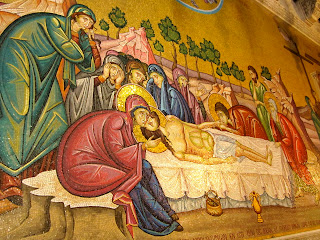In less than 48 hours, I’ll be flying across the Atlantic on
my final flight home, and my first day of Davidson classes is in less than 2
weeks. It’s hard to believe that
this summer is nearly over. In
some ways, it feels like I was just packing my suitcase, boarding my flight,
and forming my first impressions of the Middle East. Still, when I think of all that I’ve seen and done, I’m in
disbelief that it’s already over.
I came into this experience with as few expectations as
possible, not wanting to feel too hopeful or anxious about my time here. Although I have travelled abroad in the
past, this trip has been different from those in the past. For one thing, it has been the longest
time I have ever spent away from my family. I’m not typically one to feel homesick, but I know that I
will appreciate my week at home before I return to Davidson. As of now, I’ve prepared a list of no
less than 14 things (among them: a haircut, a Braves game, and trip to the
farmer’s market) that I plan to do while in Atlanta. Beyond that, there are a countless number of smaller things
that I’m looking forward to.
Thunderstorms, meals without rice, and air conditioning top the list.
Spending a prolonged period of time in Amman has allowed me
to experience the language and the culture in a more personal way. This was not a vacation. I have been immersed through my time
with my host family, my daily taxi rides to class, and my journeys through the
city streets. My 10 weeks here have
forced me to remove my rose-colored glasses and absorb all of Jordan, both
positive and negative. Amman has
served as a comfortable home base, but I think that my travels outside of the
city will leave the most lasting impression.
Without doubt, this journey will continue to make an impact
on me long after I have returned home.
From my time adjusting to the culture and navigating the city, I think
that I’ve gained a new sense of confidence and independence. My time here has prepared me for a
range of future challenges, including my anticipated semester in Morocco next
spring.
When I reflect on the past 10 weeks, my primary reaction is
one of gratitude. I am incredibly
thankful for the support that I have received from my family, my friends
(especially the Davidson crew here in Jordan with me), the Qasid administration
and faculty, Dr. Joubin, the Chaplain’s and Civic Engagement Offices at
Davidson, and many more. Thank you
all for the support you have given me both before and during my time here. This has been the opportunity of a
lifetime, and I am so appreciative of those who helped make it a reality.








































